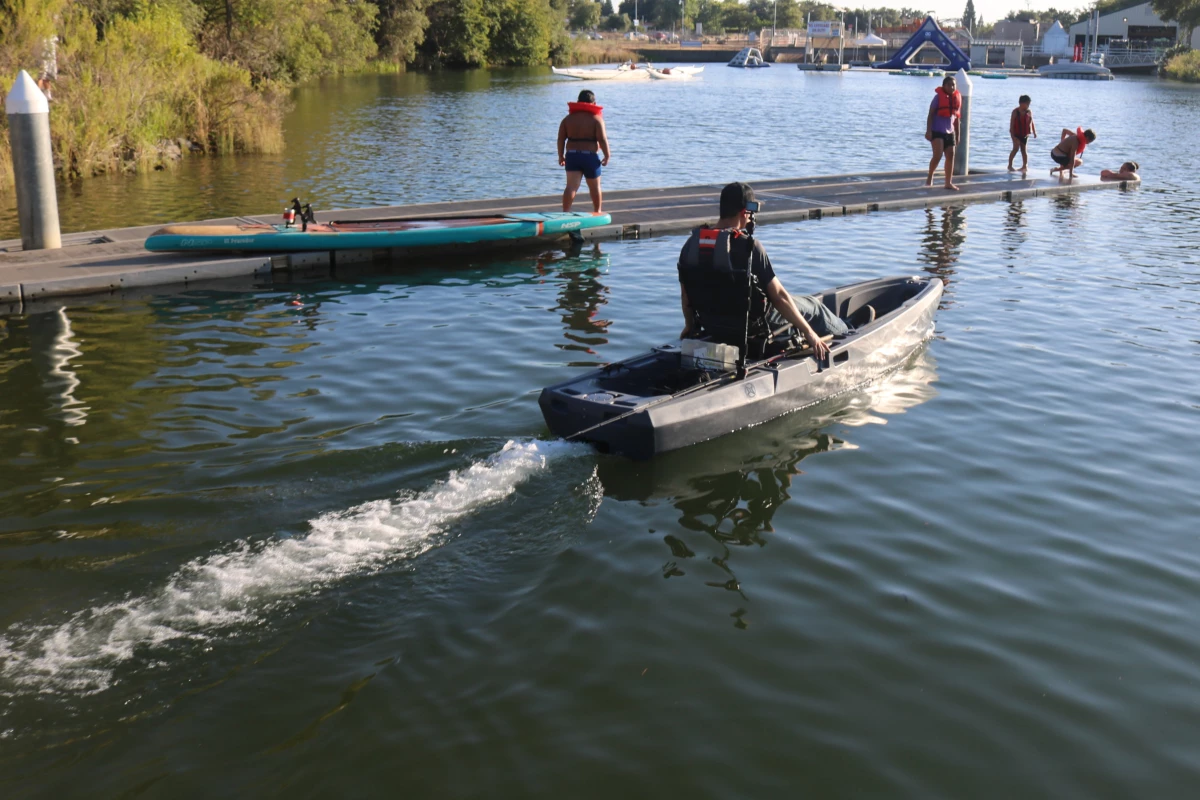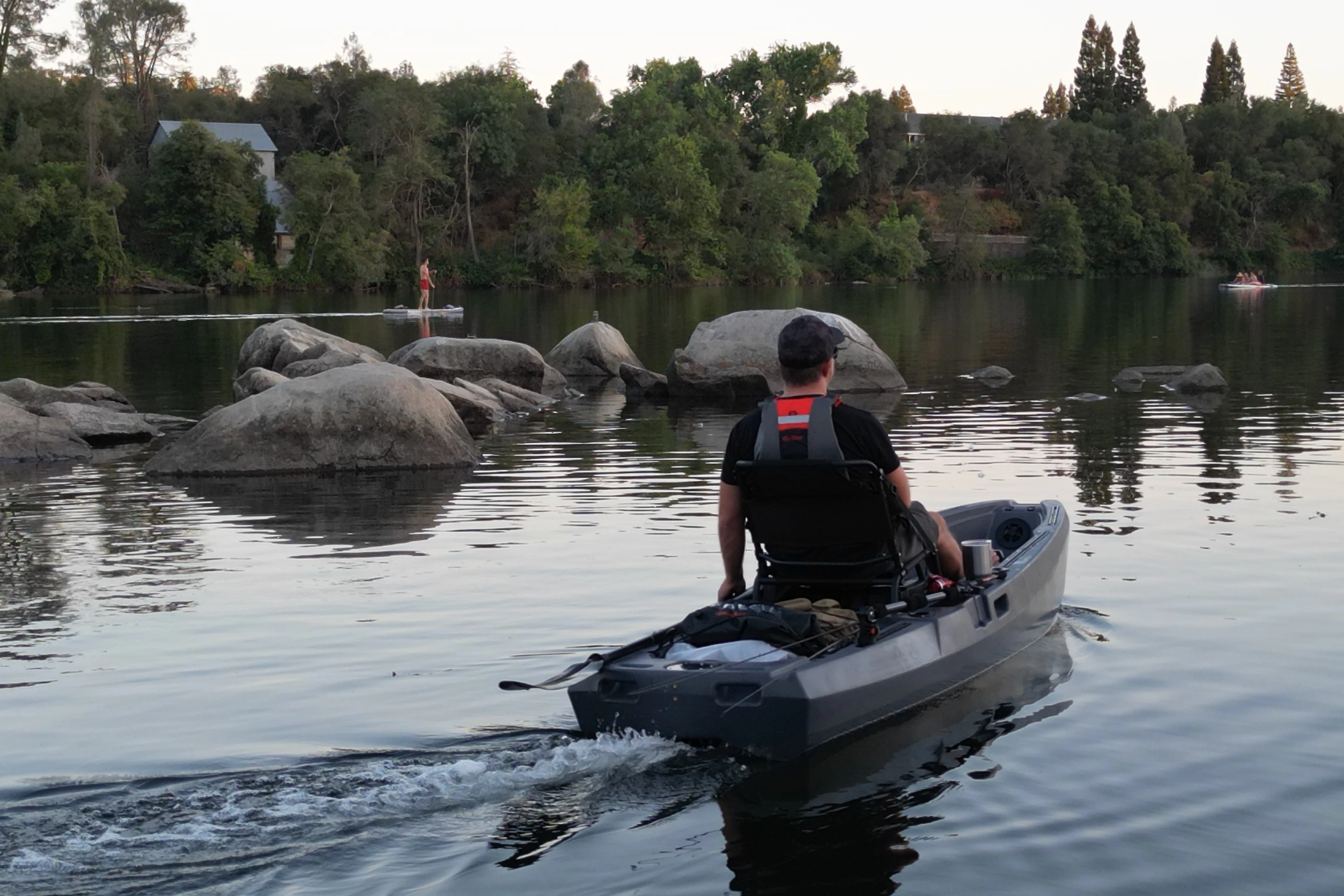Although electric motors do help kayaks fight headwinds and currents, they also add considerable weight, complexity and the potential for getting snagged in weeds. The FluxJet system is designed to change that, with a sub-5-pound electric jet drive module that seamlessly fits into the hull of a purpose-built kayak.
Currently in functional prototype form, FluxJet is being developed by California company FluxJet Marine, which is a subsidiary of Kymera. The latter firm is best known for its Kymera Body Board, a personal watercraft that uses an electric jet drive system to take prone-positioned riders up to a top speed of 20 mph (32 km/h).
Six years ago, CEO Jason Woods and his team set about simplifying that system by reducing the number of parts used in it – along with its size, cost and weight – while boosting its performance. FluxJet is the recently-unveiled result of that effort, and it could ultimately find use not only in body boards and kayaks, but also in small watercraft of any type ... see the test below.
"We realized that the conventional configuration of motor plus driveshaft plus seals plus bearings plus jet pump had fundamentally remained unchanged for 50-plus years," Woods tells us. "So we set out with a blank slate and took the whole drive back to first principles – most critically starting with 'the best component is no component' strategy."
FluxJet does indeed have much fewer parts than its predecessor, and what's left over is packaged into a single self-contained unit that can easily be removed from the boat (and reinstalled) for servicing. Importantly, instead of using a motor to spin up a driveshaft that spins up an impeller, the system simply surrounds the impeller with a ring-type electromagnetic motor.
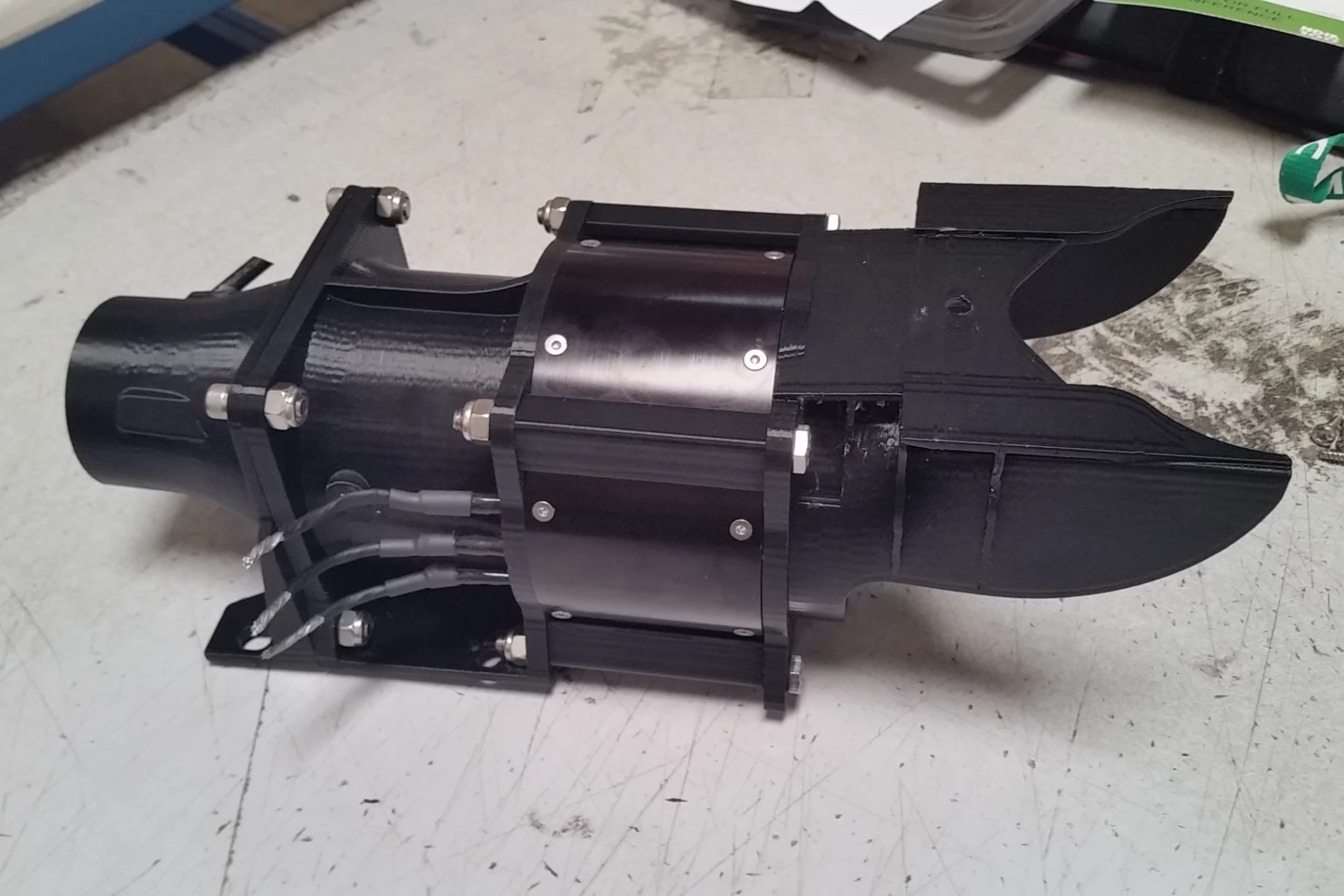
What's more, FluxJet is completely submerged … there are no air pockets anywhere in the setup. Woods says this arrangement reduces vibrations and operating noise, boosts the transfer of torque into the impeller blades, and helps cool the motor at high output levels.
An additional advantage lies in the placement of the impeller blades.
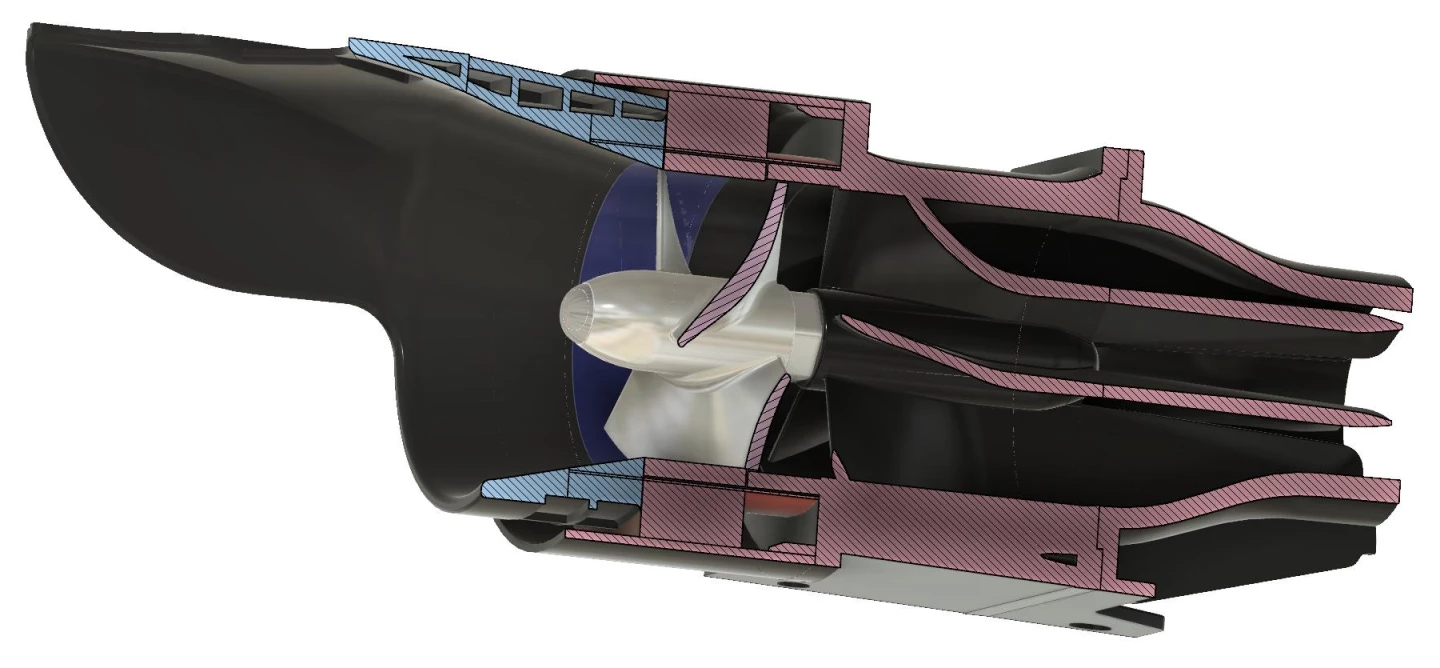
In most jet pumps, the impeller blades spin separately from the inside walls of an unmoving metal ring which surrounds them. If small objects such as grains of sand get sucked in and stuck between one of those blades and the ring wall, the impeller may jam. What's more, such actions can gradually wear down the ends of the blades, decreasing their efficiency.
This reportedly isn't a problem in the FluxJet system, as the the blades are connected to the ring, which rotates along with the impeller. Not only is there no longer a gap for sand to get stuck in, but the blades are also held more rigid via their connection to the ring. Additionally, Woods tells us that the spinning ring's moving surface helps push more water through the system, further boosting its output.
"The first test unit we built weighed in at just 4 lb [1.8 kg] and could put out 5,000 watts continuously with better efficiency than the existing 5-kW drive system in the boards," he states.
"The next units we built were 15- to 25-kW and weighed just 13 lb [6 kg]. For comparison, a basic 12-volt trolling motor you might put on a small boat/kayak with a top speed of 3 to 4 mph [5 to 6 km/h] will range from 19 to 40 lb [8.6 to 18 kg] depending on the thrust and features. Our 13-lb Fluxjet was able to push a small boat well over 20 mph [32 km/h] with a unit that is roughly the size of a football."
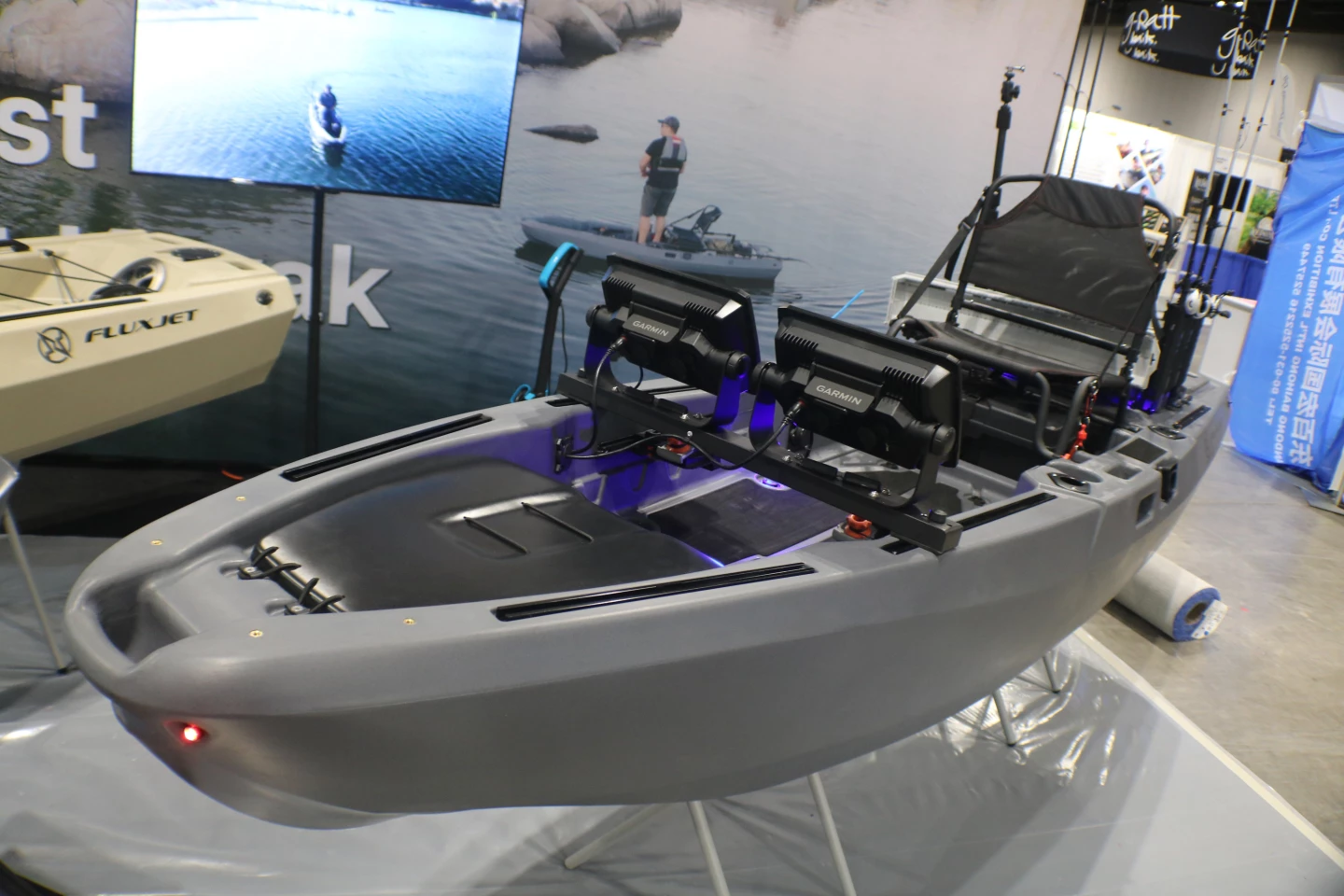
In the current fishing-kayak-integrated demo, steering is managed via two cabled foot pedals which turn the FluxJet's vectored-thrust nozzle back and forth – this means there's no rudder to get caught in weeds or scrape on the bottom. The throttle takes the form of a recessed thumb switch, which can be mounted in the cockpit to either side of the seat – the battery is located beneath the seat.
FluxJet was officially unveiled last week at the iCast 2025 fishing gear expo in Florida, where it won the Best in Show award. Plans now call for the technology to be integrated into the purpose-built US$2,999 FluxJet Kayak, which will be available for preorder as of Aug. 1st.
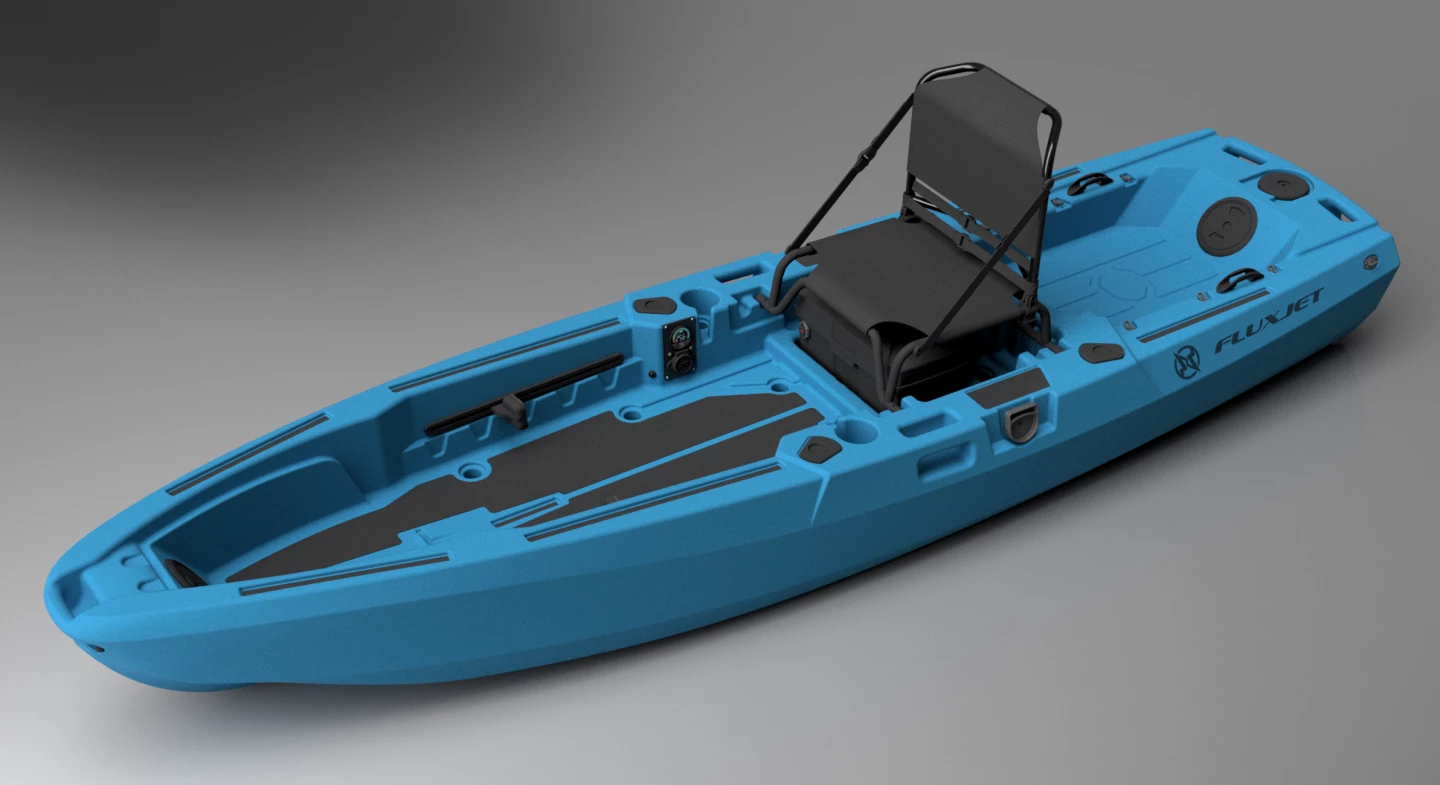
Measuring 132 inches long by 35 inches wide by 12 inches high (3,353 by 889 by 305 mm), the 88-lb (40-kg) fishing kayak will use a 1,000W FluxJet drive to reach a top speed of over 6 mph (10 km/h). Depending on battery capacity, one charge should reportedly be good for up to 16 hours of runtime.
"I really expected people to be more skeptical, but they clearly understood what we are going for," Woods tells us about his reception at iCast. "A clean simple kayak that works right out of the box and can get into super shallow water."
Source: FluxJet Marine
